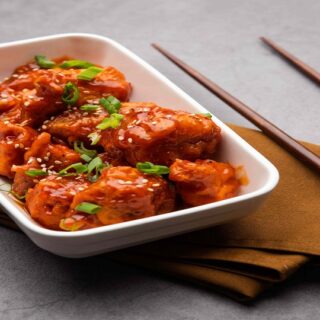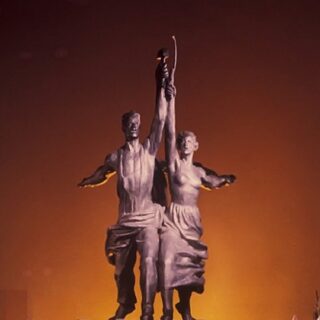
Although the Russian government had severe policies against its real and imagined political opponents, it was not a police state.
The government did not have the resources or the political will to become a police state.
The image of the Russian Empire as a police state was built up from the 1800s by socialists and liberals and taken at face value by many historians. Few people realize that many European governments during this period also had political police forces and laws defining political crimes or crimes against the state.
So just what made Russia different from European governments in facing challenges to its authority?
Unique Challenges to Government Authority in Russia
The factors that made mass terrorism possible in the Russian Empire were a virtually logical result of the challenges that the autocracy faced to its authority. Unlike governments in European countries, the Russian government faced unique challenges to its authority. These factors and challenges included:
- The existence of the socialist intelligentsia as the most politically active sector of educated society. European countries had their Bohemian intellectuals, radical marginal elements, and conspirators. The Russian revolutionary intelligentsia made up an entire social stratum of people whose only reason for existence was the destruction of the political-social order.
- The process of radicalization through which the intelligentsia continually replenished its ranks. University and postsecondary students, secondary school students, women, members of the ethnic and religious minorities constituted a large percentage of radicalized elements.
- The criminalization of many political movements, especially liberals, through their support of terrorism and other revolutionary activity.
- An ambivalent mentality among conservatives, far-rightists, and other supporters of the government toward its struggle against terrorism and revolutionary activity. Conservatives, for different reasons, often withheld their support from the government.
- An international information war conducted by socialists and liberals between 1880-1914. The opposition blackened the reputation of the autocracy and successfully projected of socialists and liberals as representatives of a different Russia—a Russia fighting for freedom and democratic values. Furthermore, the international information war convinced many Europeans and Americans, that, in Russian conditions, terrorism was a completely legitimate form of political struggle.
- The rise of right-wing terrorism as an answer to left-wing terrorism. The emergence of mass right-wing populist parties and movements as a <<revolution from the right>>. This conveyed the impression that the government, especially the bureaucracy, army, and police, was incapable of fighting terrorism, mass violence, and other forms of anti-government activity. [1, cc. 418-419]
Of course, the Revolution of 1905-1907 was a case when a variety of political, social, and other movements came together to demand changes to the political-social structure of the Empire. The movements were not united in goals and tactics and the government could crush them because the bureaucracy, army, and police stayed loyal.
The hostile relationship between the Russian government and educated society created these unique challenges to government authority. This has a very high degree of relevance for today especially when governments are dealing with challenges to their authority through terrorism and other forms of violence and oppositional activity.
A Non-Existent Police State in an Under-Policed Country
Russia’s political police force from 1880-1917 was the Department of Police [Департамент полиции], often called the Okhranka [Охранка]. The Department of Police was part of the Ministry of the Interior. Uniformed members of the Corps of Gendarmes carried out security policing and conducted inquiries in political cases. The department replaced the Third Section [Третье отделение] of His Imperial Majesty’s Own Chancellery which served as the political police from 1826-1880.
Historians have written extensively about the Okhranka’s work in crushing revolutionary and oppositional movements and how it made some innovations in political police work. The Third Section had relied on denunciations and <<sincere confessions>> of arrested suspects to arrest suspects in political crimes. This method was very ineffective because denunciations and confessions tended to name as many names as possible. This resulted in delaying police and prosecutors’ investigations, and it also antagonized society.
The Okhranka took active measures in disorganizing revolutionary and opposition activities. It used spies and informers called secret collaborators [секретные сотрудники] planted among revolutionaries and oppositionists. However, secret collaborators were often exposed by revolutionary counterspies and by whistle-blowers in the Department of Police. Secret collaborators were expected to encourage divisions between revolutionary organizations and within them. The Okhranka used them to encourage divisions between the Bolsheviks and Mensheviks. This tactic sowed division and mistrust among revolutionaries.
The Department of Police maintained offices in Europe with headquarters in Paris. Foreign operatives spied on revolutionaries, made efforts to disrupt revolutionary activities, keep émigré political factions divided both in Russia and abroad, win over foreign public opinion, largely by bribing the press, especially in France. The department in Russia also monitored the activities of public organizations, cultural trends (including the development of the film industry), the political reliability of government officials, and the state of public opinion.
The Okhranka also used agents-provocateurs [провокаторы]-informers occupying leading position in revolutionary groups and expected to incite (provoke) revolutionaries to commit criminal acts. There were also double agents-provocateurs who served both the secret police and a revolutionary organization to the point where the distinction between police and revolutionary activities is blurred. The most notorious examples of double agents were Evno Azef, leader of the Battle Organization of the Party of Socialists-Revolutionaries and Dmitri Bogrov, the assassin of Prime Minister Petr Stolypin. Use of double agents created a poisoned atmosphere in the society with people making accusations about how far the Okhranka would go in achieving its goals. Many people may have assumed that police officials deliberately used terrorists to get rid of their real or alleged enemies in the government. Furthermore, people probably suspected that the Department of Police deliberately used terrorist acts of anarchists and marginal leftist groups to discredit the revolutionary movement.
However, the Department of Police was not as powerful as many people assumed that it was. The department was understaffed and Russia in many ways was the most under-governed and under-policed country in Europe. The Okhranka had only 500 informers by 1903. [2, p. 91]. Over the years, it employed 10,000 informers—many of these worked for only a few days, while others worked for years. On the eve of the February 1917 revolution, the Okhranka had only 1,500 informers on staff. [3, p. 213]
Russian historian Z. I. Peregudova noted that the Department of Police kept index cards on 2 million people. [4, c. 48]. However, this does not mean that there were 2 million people actively engaged in revolutionary and oppositional activity. The Okhranka simply started an index card on every person mentioned in a case.
Using the regular police was not effective in policing the general population due to low staffing. Russia. In the early 20th century, there were only 1,582 police constables and 6,874 sergeants responsible for policing nearly 100 million peasants [5, p. 111]. Police of all types totalled less than 100,000 in Russia by 1905 [3, p. 4]. This meant that the government had to rely on the army to suppress peasant disorders, workers’ strikes, student riots, and other mass disturbances, especially in the Revolution of 1905-1907. Many generals and officers openly resented seeing the army being forced to serve as an internal police force.
In so many respects, the Russian government faced challenges to its authority in contrast to governments in European countries. The continually intensifying hostile relationship between the government and educated society made this possible. While other governments could rely on political police forces to suppress revolutionary activity, the Russian Department of Police simply did not have the resources to do this despite its innovations in using secret collaborators, agents-provocateurs, and double agents. Regular police could not keep order in a country with more than 120 million inhabitants. The Russian Empire simply lacked the resources to become a police state.
The next article will examine how the Russian government used the court system and extraordinary laws to crush revolutionary activity and mass violence. The autocracy’s use of police, courts, and extraordinary laws are all highly relevant for governments and societies dealing with mass terrorism and other forms of mass political violence.
Citations
- Рокки, Тони. Европейская «Эпоха динамита» и политический терроризм в Российской империи: уроки истории (The European <<Era of Dynamite>> and political terrorism in the Russian Empire: lessons of history.) // Сборник материалов VII Международной научно-практической конференции. 16–18 октября 2019 г. Тула–2020, с. 412-421.
- Daly, Jonathan W. Autocracy under siege: security police and opposition in Russia, 1866-1905. DeKalb IL: Northern Illinois University Press, 1998.
- Daly, Jonathan W. The watchful state: security police and opposition in Russia, 1906-1917. DeKalb IL: Northern Illinois University Press, 2004.
- Перегудова, З. И. Политический сыск России (Political police work in Russia): 1880–1917. Москва: РОССПЕН, 2000.
- Ascher, Abraham. Ascher, Abraham. The revolution of 1905. 2 vol. Volume 1—Russia in disarray. Stanford CA: Stanford University Press, 1988.





